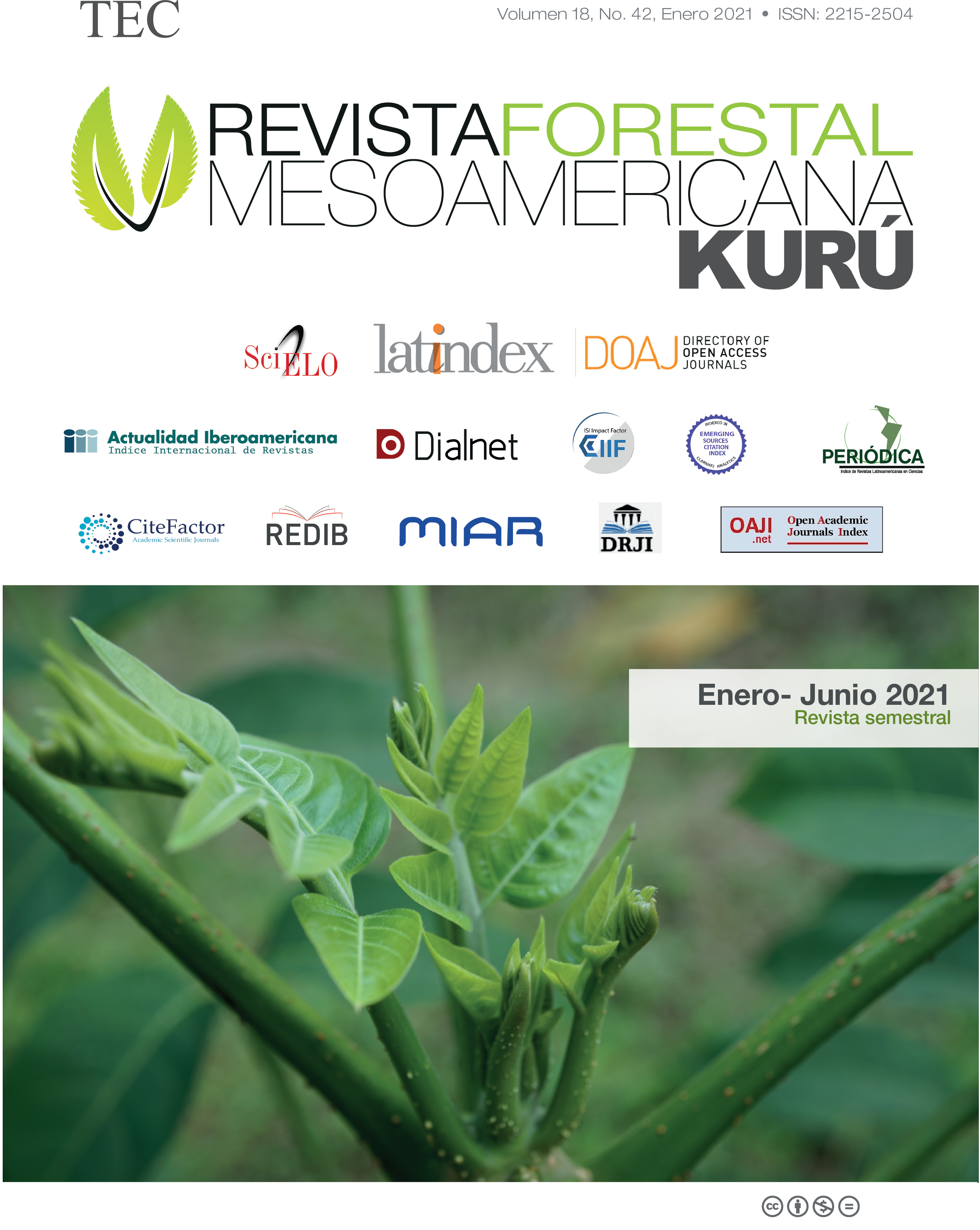Abandoned plantations of Hevea guianensis Aubl. and its potential for carbon credits in the Tapajós National Forest
Main Article Content
Abstract
The capacity to capture carbon dioxide (CO2) from the atmosphere is one of several ecosystem services offered by forests and the species Hevea guianensis Aubl. stands out as a potential CO2 sink. This study aimed to estimate the carbon credit potential in the wood of rubber trees in abandoned plantings in Tapajós National Forest. In the years 2013 and 2018, 100 % inventories were carried out, in which the circumference and height of the trees were registered. The fixed carbon (MgC ha-1), the equivalent carbon (CO2(eq) ha-1) was calculated and converted into credits per hectare (US$ ha-1) from the European System for the CO2. In 2013, 2,965 rubber trees were registered, and in 2018, 2,927 were inventoried. Despite the death of some trees in the range of 5 years, it was estimated a total of 72.3103 MgC ha-1 in 2013, and 73.3708 MgC ha-1 in 2018, resulting in a current annual increase of 0.2121 MgC ha-1, reducing 0.7777 CO2(eq) ha-1 ano-1, which would make possible an annual revenue of US$ 515.90. Thus, it was concluded that the potential for generating carbon credits identified in the rubber plantations could add value to the forest, resulting in an addition to the income of the traditional population, making it a differential for the conservation of the Conservation Unit.
Article Details

This work is licensed under a Creative Commons Attribution-NonCommercial-NoDerivatives 4.0 International License.
Revista Forestal Mesoamericana Kurú is licensed under CC BY-NC-ND 4.0
Al enviar un artículo a la Revista Forestal Mesoamericana kurú (RFMK), los autores ceden los derechos patrimoniales a la editorial de la RFMK una vez su manuscrito haya sido aprobado para publicación, autorizando a la RFMK a editarlo, reproducirlo, distribuirlo, y publicarlo en formato físico y/o electrónico. La titularidad de los derechos morales sobre los trabajos objeto de esta cesión seguirá perteneciendo a los autores.

